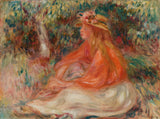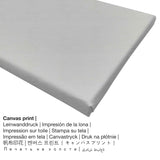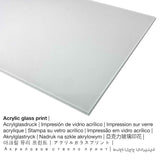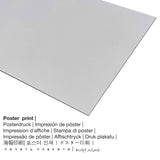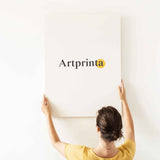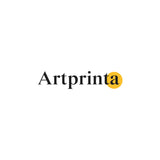Pierre-Auguste Renoir, 1910 - Nwanyị nọ ọdụ (Nwanyị nọ ọdụ) - mbipụta nka mara mma.
Ụtụ gụnyere. Mbupu gbakọrọ na ndenye ọpụpụ.
Data nka ahaziri
| Aha nke ọrụ nka: | "Seated Woman (Seated Woman)" |
| Nchịkọta nke ọrụ nka: | sere |
| Okwu mkpokọta: | nkà nke oge a |
| Time: | 20th narị afọ |
| Emepụtara n'afọ: | 1910 |
| Ogologo afọ nka nka: | gbara afọ 110 |
| Agba na: | mmanụ na kwaaji |
| Nha izizi (ọrụ nka): | N'ozuzu: 12 11/16 x 16 15/16 na (32,2 x 43 cm) |
| Ụlọ ihe ngosi nka: | Ntọala Barnes |
| Ebe ngosi nka: | Philadelphia, Pennsylvania, Njikota Obodo Amerika |
| website: | Ntọala Barnes |
| Ikikere nke ihe osise: | ngalaba ọha |
| Site n'aka: | Site n'ikike nke Barnes Foundation, Merion na Philadelphia, Pennsylvania |
Onye na-ese ihe
| Ihe nkiri: | Pierre-Auguste Renoir |
| Aha ndi ozo: | Renoir, pierre august renoir, firmin auguste renoir, Renoir August, רנואר אוגוסט, p.a. renoir, רנואר פייר אוגוסט, Renoar Pjer-Ogist, Pierre-Auguste Renoir, August Renoir, renoir p.a., Renoir Pierre August, Renuar Ogi︠u︡st, renoir a., Renoir Pierre-Auguste, Pierre Auguste Renoir, Renoir Auguste, Auguste Renoir, a. renoir, Renoir Pierre Auguste |
| okike nke onye nka: | nwoke |
| Nationality: | French |
| Ọrụ nke onye na-ese ihe: | onye na-ese ihe, onye na-ese ihe, onye na-ese ihe |
| Country: | France |
| Nkewa onye nka: | omenkà nke oge a |
| Ụdị nke onye na-ese ihe: | Mmetụta |
| Nwụrụ anwụ: | 78 afọ |
| Afọ ọmụmụ: | 1841 |
| Ebe amụrụ onye: | Limoges, Nouvelle-Aquitaine, France |
| Nwụrụ n'afọ: | 1919 |
| Ebe ọnwụ: | Cagnes-sur-Mer, Provence-Alpes-Cote d'Azur, France |
Nkọwapụta ngwaahịa
| Bipụta ụdị ngwaahịa: | mmepụta nka |
| Mmeputakwa: | dijitalụ mmeputakwa |
| Production usoro: | UV kpọmkwem obibi |
| Mmalite nke ngwaahịa a: | Germany |
| Stockdị ngwaahịa: | a na-achọ |
| Ihe eji eme atụmatụ: | ihe ndozi mgbidi, nka mgbidi |
| Nhazi onyonyo: | nhazi odida obodo |
| Ụdị anya: | 4: 3 (ogologo: obosara) |
| Ntụgharị nkọwa akụkụ onyonyo: | ogologo bụ 33% ogologo karịa obosara |
| Nhọrọ akwa: | Mpempe akwụkwọ, akwụkwọ mmado (akwụkwọ kwaaji), mbipụta ọla (aluminium dibond), mbipụta iko acrylic (nwere ezigbo mkpuchi iko) |
| Canvas dị n'elu ihe nrịbama (mbipụta kanvas) nha dị iche iche: | 40x30cm - 16x12", 80x60cm - 31x24", 120x90cm - 47x35", 160x120cm - 63x47" |
| Mpempe iko acrylic (nwere ezigbo mkpuchi iko) nha: | 40x30cm - 16x12", 80x60cm - 31x24", 120x90cm - 47x35", 160x120cm - 63x47" |
| Mbipụta akwụkwọ mmado (akwụkwọ kwaaji): | 40x30cm - 16x12", 80x60cm - 31x24", 120x90cm - 47x35" |
| Nha ebipụta aluminium dibond: | 40x30cm - 16x12", 80x60cm - 31x24", 120x90cm - 47x35" |
| Nhazi mbipụta nka: | ngwaahịa anaghị emebi emebi |
Kedu ihe ngwaahịa m nwere ike ịhọrọ?
The product dropdown menu ofers you the opportunity to pick your favorite size and material. The following sizes and materials are the options we offer you for individualization:
- Kwaaji: A printed canvas material mounted on a wooden stretcher frame. A printed canvas of this artpiece will let you turn your art print into a large collection piece like you would see in a gallery. How can I hang a canvas print on the wall? The advantage of canvas prints is that they are relatively low in weight, which implies that it is quite simple to hang up the Canvas print without additional wall-mounts. A canvas print is suited for all types of walls.
- Mbipụta nke aluminom: These are metal prints on aluminium dibond with a true depth - for a modern look and a non-reflective surface. The colors of the print are luminous and vivid, the details are crisp, and there’s a matte appearance you can literally feel.
- Mpempe akwụkwọ mmado ebipụtara na akwa akwa: Our poster print is a UV printed cotton canvas with a granular surface finish. Please note, that depending on the size of the poster we add a white margin between 2 - 6cm around the artwork, which facilitates the framing.
- Mbipụta enyo acrylic: A glossy acrylic glass print, often described as a print on plexiglass, changes your favorite original into home decoration. In addition, the acrylic glass art print offers a distinct alternative to aluminium or canvas art prints. Your artwork is being printed thanks to state-of-the-art UV direct printing technology. This makes vibrant and impressive print colors. The major upside of a plexiglass print is that contrasts and also painting details become more recognizeable because of the granular tonal gradation in the picture.
Ozi gbasara ihe ahụ
N’afọ 1910 onye omenkà Pierre-Auguste Renoir made this artwork. The version of the masterpiece had the following size N'ozuzu: 12 11/16 x 16 15/16 na (32,2 x 43 cm) ewe me ya ihe eji eme ihe mmanụ na kwaaji. Besides, this work of art is included in the Barnes Foundation's art collection. We are glad to state that this artpiece, which is in the ngalaba ọha a na-enye ya site n'ikike nke Site n'ikike nke Barnes Foundation, Merion na Philadelphia, Pennsylvania.: . N'elu nke ahụ, nhazi nke mmepụta dijitalụ na-abanye odida obodo format na a akụkụ ruru nke 4: 3, nke pụtara na ogologo bụ 33% ogologo karịa obosara. The illustrator, painter, sculptor Pierre-Auguste Renoir was an artist, whose style was mainly Impressionism. The painter lived for a total of 78 years - born in 1841 na Limoges, Nouvelle-Aquitaine, France ma nwụọ n'afọ 1919 na Cagnes-sur-Mer, Provence-Alpes-Cote d'Azur, France.
Ihe dị mkpa: We try whatever we can to depict our products in as much detail as possible and to illustrate them visually on the respective product detail pages. Still, the tone of the printing material and the printing can differ somehwat from the presentation on your device's monitor. Depending on your screen settings and the condition of the surface, color pigments might not be printed as realisitcally as the digital version shown here. In view of the fact that all the art reproductions are printed and processed manually, there may as well be minor differences in the motif's size and exact position.
© nwebiisinka site na - Artprinta.com (Artprinta)

